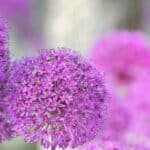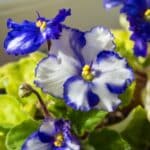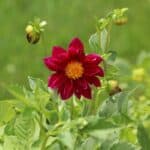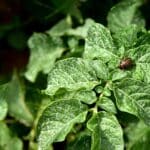Spirea (Spiraea japonica’ Gold Mound’), also known as Gold Mound Spirea or Japanese Spirea, is a trendy plant in cottage gardens and butterfly gardens because this perennial produces lots of beautiful flowers that can perk up these spaces, and it is known to attract lots of butterflies and pollinators to your areas.
This deciduous plant can add multi-seasonal interest to your garden because its foliage changes color through the seasons. The shrubs will add lots of color in late spring and summer with their showy blooms. The flowers will fall, but the leaves will transform into beautiful tones of yellow, orange, and red, making your garden look striking.
Gardeners love to combine spirea shrubs with other plants like ornamental grasses, butterfly bushes, sedums, knockout roses, dianthus, junipers, and Russian sage because these companion plants will complement these shrubs and can make them even more functional.
Let’s look at these Gold Mound Spirea companion plants and discuss creative ways to use them in your garden.
What to Grow with Spirea
It is best to group plants with similar growing requirements if you want to create a showy garden filled with lush growth.
Spirea shrubs need lots of sunlight and prefer a full-sun position. In warm regions, you can grow it in a light-shaded area, but the growth of this shrub will be stunted in too much shade.
It is best to position the flowering shrub in well-drained soil. The shrub will grow well in any soil, including poor soil conditions, but it will develop root rot if its roots remain too wet.
This hardy plant can tolerate extreme heat and cold and handle a lot of humidity or even drought.
Let’s look at some sun-loving spirea companions that can tolerate many conditions yet prefer moderate watering.
Ornamental Grasses
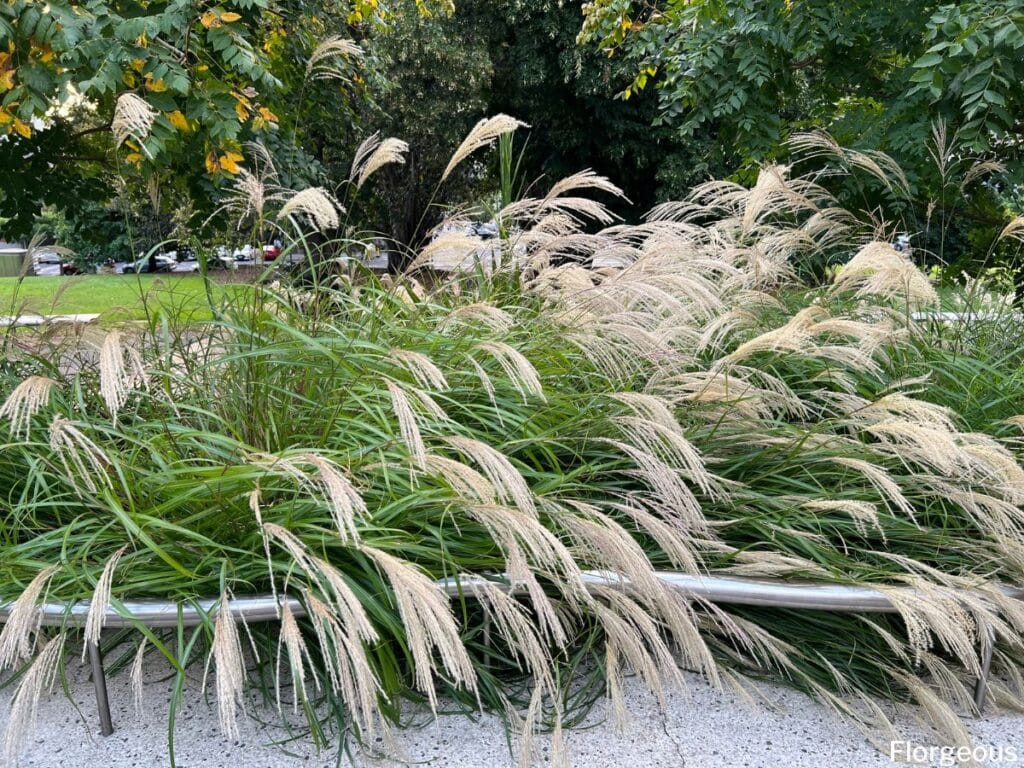
Spirea shrubs can look striking if you use them as a backdrop for short ornamental grass varieties like blue fescue (Festuca glauca) or mondo grass (Ophiopogon japonicus). They can also look striking if you add clumps of tall grasses like giant feather grass (Celtica gigantea) and Indian grass (Sorghastrum nutans) next to the shrubs to form attractive texture-rich hedges.
It is essential to know that not all ornamental grass varieties will grow well alongside spirea. Shade-loving and moisture-dependent grasses won’t grow well next to these hardy shrubs.
When doing companion planting with ornamental grasses and flowering shrubs, it is important to position the shorter plants in the front of your garden spaces or mix plants with a similar height in the same row or garden bed so all plants will be nice and visible.
Butterfly Bush

Butterfly bush (Buddleja), also known as orange-eyed butterfly bush or summer lilac, is an ideal spirea companion plant if you want to grow a beautiful butterfly garden because butterflies adore the sweet scent of these showy flowers. The perennial shrub will also add lots of color to your garden with its bright flower spikes, and it comes in colors like gold, pink, purple, and white.
These showy shrubs will flourish next to spireas because it is very similar in their growing needs. It is a hardy, drought-tolerant plant with a fast growth rate, and the shrubs can reach up to 12 feet tall.
The best way to combine butterfly bushes and spirea is by growing them alongside one another to create a flowering hedge or privacy screen.
Sedums
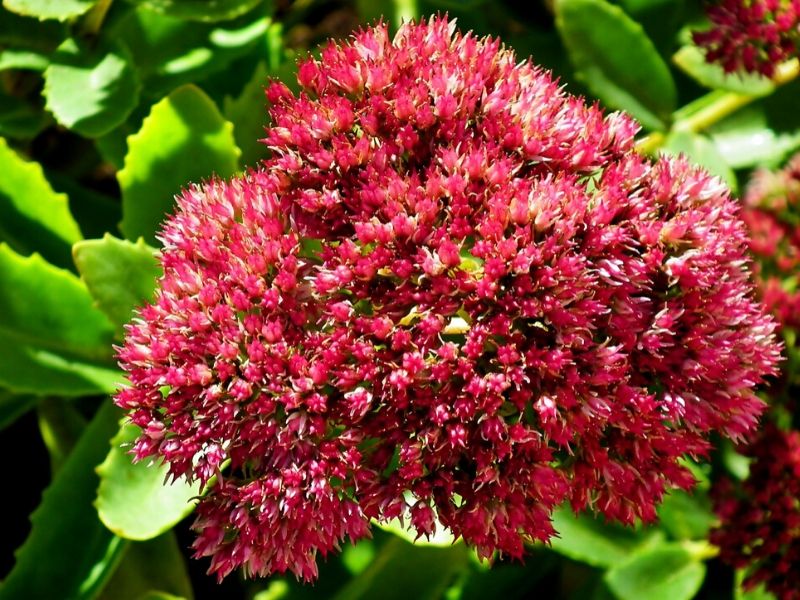
Sedums (Sedum), also known as roseroots or stonecrops, are very popular editions to dry gardens or rainfall gardens and can be a perfect pick if you are looking for something showy to grow in front of your spirea shrubs.
This succulent plant has fleshy, rounded leaves and over 300 different cultivars that can vary quite a bit in appearance.
Flowering varieties tend to be taller, and they can produce clusters of flowers in white, yellow, pink, or red hues. These varieties will attract lots of pollinators and butterflies to your garden.
Sedums need a lot of direct sunlight, so it is best to grow them in front of your shrubs to get the most direct sun. They are also hardy, water efficient, and grow well in any soil type.
Knockout Roses

Knockout roses (Rosa ‘Knock Out’) are some of the hardiest rose varieties, and, unlike other rose varieties, they are not too susceptible to pests and diseases. This is an ideal companion plant for spirea to create a showy flowering hedge or privacy screen in your garden.
Knockout roses come in many varieties, including flower colors like peach, yellow, red, pink, and white.
This shrub is a favorite in ornamental or cottage gardens because it is so easy to care for. It will grow well in just about any soil type, and, as with spirea, it will develop well in full sun to light shade positions.
Most knockout rose varieties will only grow up to 6 feet tall, while spirea can grow up to 10 feet tall. These shrubs are, however, pretty easy to prune, so you should be fine keeping the different species in check.
The most crucial growth factor to remember is that knockout roses need lots of air circulation. Avoid growing them too close to other shrubs.
Dianthus

Dianthus (Dianthus) is the perfect flower to add to your sunny garden if you want a good ground cover for shrubs. This vivid-blooming flower has many different names and is often called cheddar pinks, clove pinks, cottage pinks, eastern star, sweet williams, or gillyflowers.
These flowering plants rely on full sun to flower and will stay short, with a maximum height of 3 feet. You can grow them all around the base of your spirea flowers or add them as a barrier plant in the front of your garden space. The dense growth of these flowers is ideal for keeping the soil cool and moist so spireas won’t dry out too soon.
These showy perennials come in various pink and white hues and should look striking in front of spirea bushes with vivid flowers and bright foliage.
Junipers
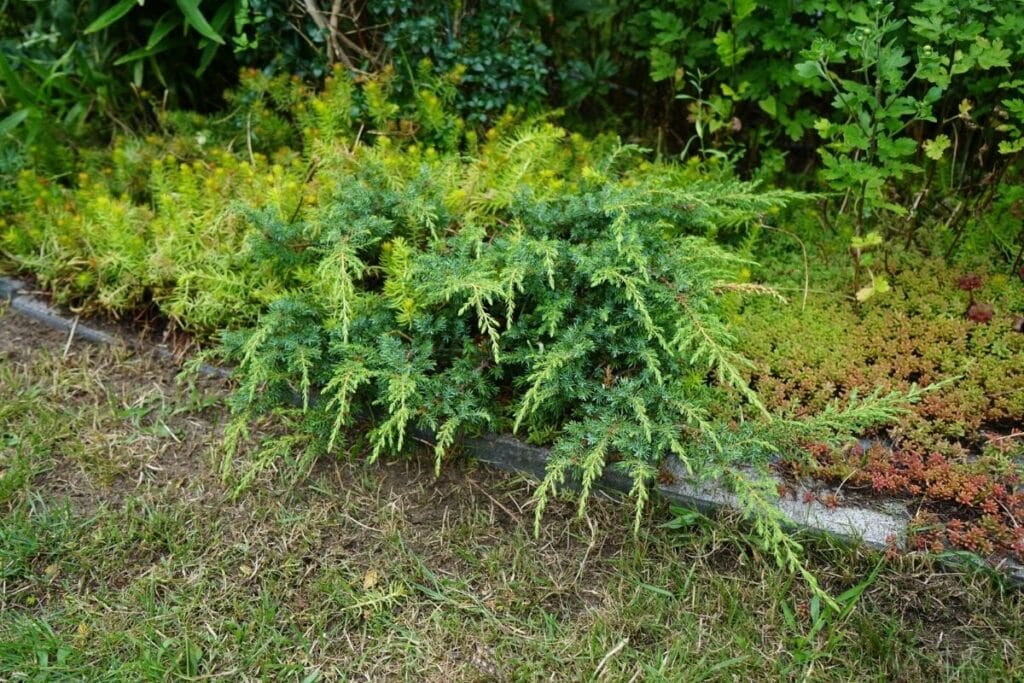
Junipers (Juniperus) is a plant that is frequently seen in ornamental gardens because it adds lots of texture to spaces with its interesting needle-like leaves. The plant also produces showy blue-toned seeds or berries that can add more color to your garden space.
There are many varieties of junipers. Some are low growers and ideal for ground covers in front of a lane or hedge of spirea and others form short trees that can add lots of dimension if you grow them alongside spirea shrubs.
These hardy plants can tolerate extremely cold temperatures, drought, and lots of direct sun but they will also grow well in a light shade position.
Russian Sage

Russian sage (Perovskia atriplicifolia) is a winner in any dry garden or rain garden, and an ideal companion plant to grow if you want to create spaces that don’t require a lot of maintenance and care.
This herb is known for its rich fragrance and it is mostly grown because the silver-toned foliage and vivid but delicate purple flowers can add a lot of color and contrast to your garden spaces.
Russian sage looks best in full sun but will tolerate a bit of light shade. They can handle a lot of intense heat and are ideal for warmer areas in your garden like alongside rocky driveways or street strips.
These fragrant shrubs will only grow up to 5 feet tall. When you combine them with spirea, it is usually best to grow them in the front of your garden with spirea shrubs as a backdrop behind them.
Some gardeners also enjoy mixing them with spirea to form flowering hedges but for this type of setup, you will need to frequently prune or trim your spireas since these shrubs can grow quite vigorously.
What NOT to Grow with Spirea
Spirea will grow well alongside many plant varieties, including many shrubs. But, some plants cannot tolerate the harsh conditions in which spirea flourish. Here is a quick look at some plant combinations to avoid next to spirea.
Shade-Loving Species
Spireas can survive in light shade but won’t grow well if they don’t receive enough sunlight. It is best not to combine this plant with shade-loving shrubs like camellias, rhododendrons, hydrangeas, or boxwoods.
Moisture-Loving Plants
Spireas require frequent watering, but they shouldn’t be watered too often. If you grow them next to moisture-dependent plants like ferns, begonias, or turtleheads, their roots will soon start to rot away, and your plant will die.
Landscaping Ideas for Spirea and Companions
Spireas can be trimmed and pruned into shape and they form dense shrubs. They are also pretty easy to grow and care for. Because of these qualities, they have many different garden applications like the following.
Privacy Screens
These shrubs are ideal for creating privacy screens in your garden. You can grow them next to other flowering shrubs like knockout roses, butterfly bushes, or tall ornamental grasses to block off the view to certain parts of your garden.
Hedges or Borders
Low-growing varieties of spirea can be great for creating shrub borders or low hedges. They can look especially charming if you pair them with other shrubs like Russian sage to form mixed hedges. Some also love to combine them with shorter plants like short dianthus or sedums to create multi-dimensional borders with lots of color.
Focal Points
Spireas can be used as a main focal point in your garden if you add a lower plant like dianthus, sedums, or ground cover junipers as a border around these interesting flowering shrubs.
Final Thoughts
Spirea can look striking if you pair it with other hardy and low-maintenance companion plants like ornamental grasses, knockout roses, dianthus, sedums, butterfly bushes, junipers, or Russian sage. This interesting shrub is ideal for creating showy mixed borders, hedges, or privacy screens and they can also form an interesting focal point in your garden.
We hope that you enjoyed this companion planting guide and that you now have lots of great ideas for combining and using spirea alongside other plants to create showy spaces.
See more:
Image by herreid/depositphotos


